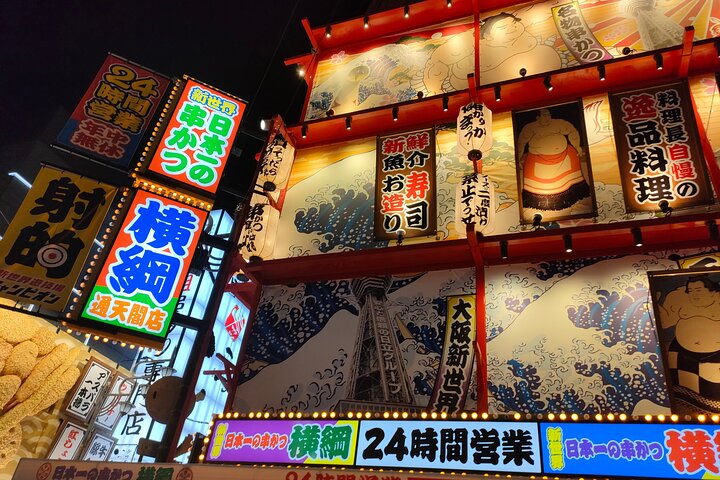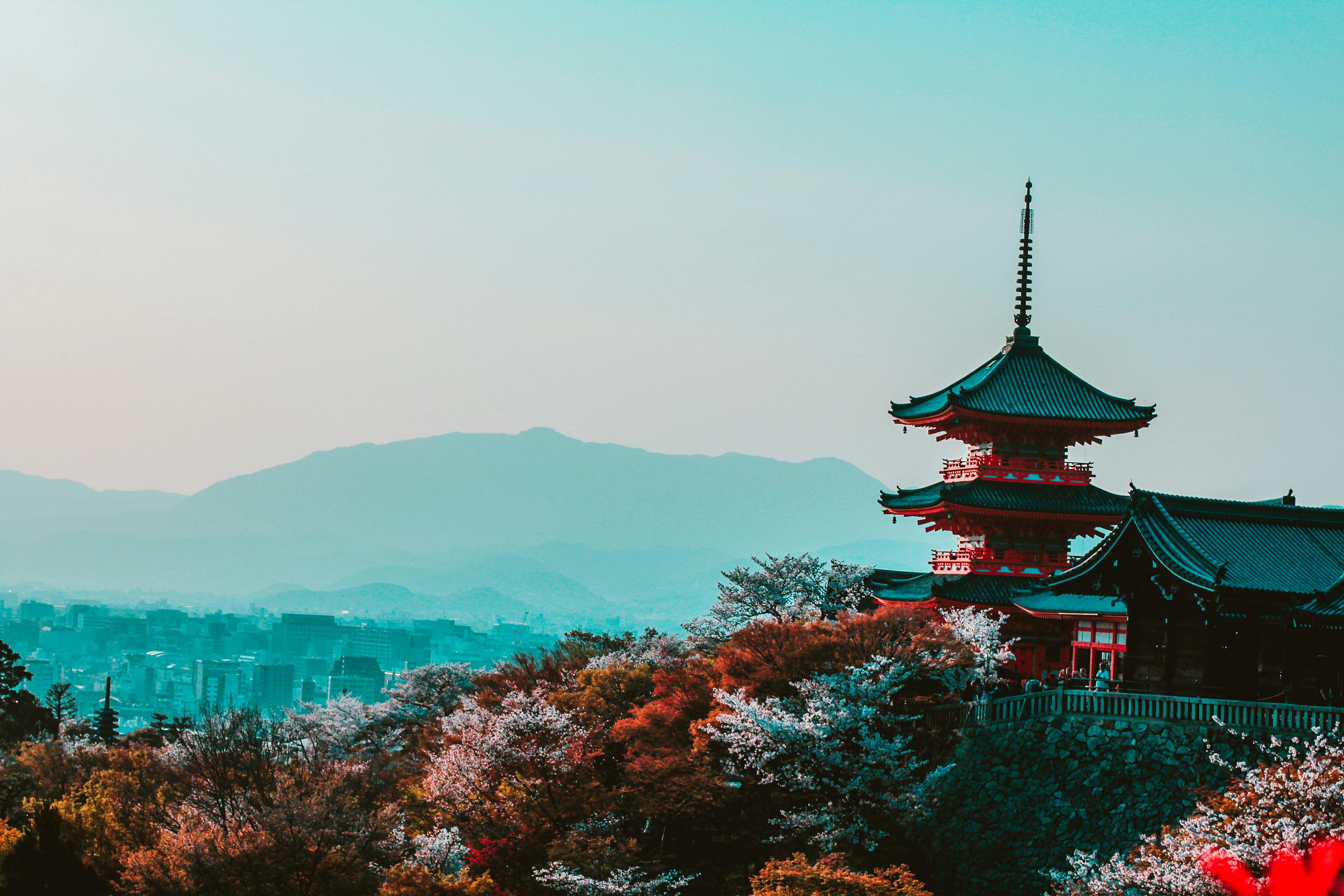22 Days in Japan on a Budget: A Walking-Focused Tokyo, Kyoto, and Osaka Itinerary
Japan balances ancient ritual with cutting-edge city life, where 1,000-year-old temples share space with ramen counters and neon streets. This 22-day itinerary is built for travelers who like to walk—think neighborhood-to-neighborhood strolls, river paths, temple approaches, and long shopping arcades that feel like time travel.
History hums under everyday life. In Tokyo, Shinto shrines peek from back lanes; in Kyoto, mossy temple gardens and tea houses set the rhythm; and in Osaka, street food and merchant quarters tell the story of a trading city. Museums are world-class, trains are punctual, and convenience-store cuisine is reliably tasty and cheap.
Practical notes: Japan is safe and orderly; no tipping is expected. Load a Suica/PASMO/ICOCA transit card on your phone for quick rides and vending machines. With a budget of 22/100, we’ve prioritized walkable routes, lunch specials, free viewpoints, and neighborhood food—while still highlighting a few great-value tours for insight.
Tokyo
Tokyo is a city of villages stitched together by train lines—perfect for walkers. Spend days crisscrossing Asakusa’s temple precincts, Ueno’s museums, Yanaka’s old-town lanes, and the west side’s icons: Shibuya Crossing, Meiji Shrine, Omotesandō, and Shimokitazawa’s vintage alleys.
Arrive via flight search on Trip.com or Kiwi.com. Around-town trains and subways are best booked or referenced via Trip.com Trains.
Days 1–8: Historic East, Trendy West, and Classic Day Trips
Days 1–3 | Old Tokyo Walks: Base yourself near Asakusa or Ueno for easy walks. Stroll Sensō-ji’s thunder gate to Nakamise’s snack stalls, detour through Kappabashi Kitchen Street, and continue to Kuramae’s indie cafés. Spend a half day in Ueno Park’s museums (Tokyo National Museum is the national treasure trove) and amble to Yanaka Ginza for retro shopping streets and cats sunning on stoops.
Days 4–5 | West Side Icons: Start at Meiji Shrine through the cedar forest, then people-watch in Harajuku’s Takeshita Street and stroll Omotesandō’s architecture. Cross Shibuya Crossing and climb to a free city view at the Tokyo Metropolitan Government Building in Shinjuku before exploring Golden Gai’s tiny bars (just read posted cover charges).
Day 6 | Mt. Fuji Views (budget-friendly bus tour): Swap transit planning for a one-day guided outing to Kawaguchiko and classic Fuji viewpoints.

Mount Fuji Full Day Sightseeing Tour from Tokyo: a cost-effective way to hit multiple scenic stops without transfers.
Day 7 | Nikko Temples & Nature: UNESCO-listed shrines, a sacred cedar avenue, and mountain air make Nikko a classic first-time day trip.

Nikko, Kegon Waterfall & Chuzenji Lake Day Tour: efficient routing for Toshogu Shrine and lake vistas.
Day 8 | Food & Culture Workshops: Make your own lunch and master sushi rice techniques in historic Asakusa, or join a local-led food crawl in Shinjuku.

Sushi Making Tokyo Class (Asakusa): budget-friendly, hands-on, and delicious.

Shinjuku Food Tour (13 Dishes at 4 Local Eateries): tiny shops and local joints you might miss on your own.
Budget eats, coffee, and local gems in Tokyo:
- Breakfast/coffee: Streamer Coffee Company (big pours), Glitch Coffee (light roasts), or a Lawson onigiri picnic in Ueno Park.
- Lunch: Tendon Tenya (tempura bowls under ¥1,000), Hanamaru Udon (kitsune or beef udon), Uogashi Nihon-Ichi standing sushi for quick, fresh bites.
- Dinner: Omoide Yokocho (Shinjuku) for smoky yakitori counters; Torikizoku chain for fixed-price skewers; Kanda’s curry houses for hearty plates.
- Markets: Tsukiji Outer Market for tamagoyaki sticks and kaisendon; Ameya-Yokochō (Ueno) for snack grazing.
- Free views/walks: Tokyo Metropolitan Government Building observatories; riverside Sumida promenade; Yanaka Cemetery lane to Yanaka Ginza at sunset.
Where to stay in Tokyo (budget-forward, with options):
- Hotel Sunroute Plaza Shinjuku (great transport hub; often good deals).
- Hotel Gracery Shinjuku (compact, central; walk to food streets).
- Keio Plaza Hotel Tokyo (spacious rooms; consider for points or sales).
- Splash-out picks if you decide to treat yourself: The Peninsula Tokyo, Aman Tokyo, or The Ritz-Carlton, Tokyo.
- Apartment-style stays: search deals on VRBO Tokyo or compare on Hotels.com Tokyo.
Tokyo → Kyoto (morning departure): Take the Shinkansen from Tokyo to Kyoto. Nozomi: ~2h15m; Hikari: ~2h40m. Expect ~¥14,000–15,000 reserved; buy/compare on Trip.com Trains. Pack a station bento and enjoy Mount Fuji views on the right side heading west.
Kyoto
Once the imperial capital, Kyoto rewards slow walks: shrine-lined alleys, tea-scented streets, and riverside paths. Temples anchor the city—Fushimi Inari’s torii tunnels, Kiyomizu-dera’s veranda, Arashiyama’s bamboo grove—and neighborhoods like Gion and Pontochō glow after dusk.
Museums deepen context: Kyoto National Museum for Buddhist art, the Kyoto Railway Museum for engineering buffs, and the International Manga Museum for pop culture. Markets, especially Nishiki, are ideal for lunch-on-foot.
Days 9–15: Temples, Lanes, and a Nara Day Trip
Days 9–11 | Eastern Kyoto: Walk from Ginkaku-ji along the Philosopher’s Path in sakura season or quieter months alike. Thread through Higashiyama’s stone lanes to Kiyomizu-dera and descend Sannenzaka/Ninenzaka for traditional townhouses and tea shops.
Days 12–13 | Arashiyama & Western Kyoto: Start early for the Bamboo Grove, then Tenryū-ji temple garden. Cross Katsura River to Arashiyama Park Observation Deck for a crowd-free hill walk and monkey park views, then finish at suburban coffee roasters.
Day 14 | Nara day trip: Temples in a deer park setting—Tōdai-ji’s Great Buddha Hall astonishes, and Kasuga Taisha’s lantern-lined forest paths are perfect for long walkers.

Nara Early Morning Tour: go before crowds for peaceful photos and quiet temple time.
Day 15 | Evenings in Gion: Twilight brings lantern-lit lanes. Learn the history (and etiquette) of geiko/maiko districts with a local guide.

Gion Geisha District Walking Tour: context-rich storytelling through Kyoto’s most atmospheric streets.
Kyoto cultural add-ons (pick 1–2):

Private Tea Ceremony with Kimono: learn the meditative ritual behind Japan’s most refined cup.

Private Kyoto Tour with a Local: tailor your walking route to gardens, shrines, or crafts.
Budget eats, coffee, and local gems in Kyoto:
- Breakfast/coffee: % Arabica (river views), Weekenders Coffee (courtyard hideaway), Inoda Coffee (retro Kyoto institution).
- Lunch: Menbaka Fire Ramen (theater and taste), Owariya (centuries-old soba), Musashi Sushi (wallet-friendly conveyor-belt sushi).
- Snacks: Nishiki Market—soy milk donuts, yuba skewers, pickles, croquettes; try sesame ice cream along Sannenzaka.
- Dinner: Pontochō alley for izakaya sets; Fushimi sake district tastings paired with yakitori nearby; ramen lanes around Kyoto Station.
- Walks: Kamogawa riverbank paths at sunset, Shirakawa canal in Gion, and Maruyama Park to Chion-in gate after dark.
Where to stay in Kyoto (value first):
- Piece Hostel Sanjo (excellent budget base near downtown).
- Hotel M's Plus Shijo Omiya or Hotel M's Est Shijo Karasuma (clean, compact, walkable).
- Midrange/quiet: Kyoto Brighton Hotel or Kyoto Tokyu Hotel.
- Splash-out: The Ritz-Carlton, Kyoto (riverfront serenity).
- Compare apartments/rooms on VRBO Kyoto or deals via Hotels.com Kyoto.
Kyoto → Osaka (morning departure): JR Special Rapid or local: ~30 minutes, ~¥570–1,000 depending on train. Check times/fares on Trip.com Trains. Aim to arrive before lunch to jump right into Osaka’s food scene.
Osaka
Osaka is Japan’s kitchen: generous portions, loud menus, and a talent for fun. It’s also premium for walkers—riverside promenades in Nakanoshima, the 2.6-km Tenjinbashisuji arcade, retro Shinsekai, and backstreets of Nakazakichō’s indie boutiques.
History buffs can layer in Osaka Castle’s museum and the city’s merchant past. For a nature break, Minoh Park’s maple-lined path to a waterfall is one train ride away.
Days 16–22: Street Food, Neighborhoods, and Side Trips
Days 16–18 | Dōtonbori & Shinsekai: Walk the canal under neon, sample takoyaki and okonomiyaki, then head to the retro glow of Shinsekai for kushikatsu skewers. Explore Nakazakichō’s wooden houses reborn as cafés and studios.
Day 19 | Museums & Markets: The National Museum of Art (underground architecture) pairs well with a river walk. Seek morning sushi bowls near the Central Wholesale Market, then browse Kuromon Ichiba for snacks.
Day 20 | Himeji or Minoh Walk: Train to Himeji for Japan’s most spectacular castle (about 1 hour) or choose Minoh Park’s easy waterfall hike for leafy views and momiji tempura (fried maple leaves) in season.
Days 21–22 | Deeper Osaka & Farewell: Tenjinbashisuji arcade is a walker’s dream; stop for udon counters and knife shops. Spend your final night with a local-led tasting tour to toast the trip.
Local-led tours (choose 1–2 based on appetite):

Osaka Food Tour – 13 Dishes at 5 Local Eateries: feast through backstreets where locals go.

Hungry Osaka Street Food Tour (Shinsekai): a Best of the Best 2025-winning evening of classics and neighborhood stories.
Budget eats, coffee, and local gems in Osaka:
- Breakfast/coffee: Lilo Coffee Roasters (Americano to go), Takamura Coffee Roasters (Nakanoshima detour), or convenience-store sandos by the river.
- Lunch: Hanamaru Udon or a standing soba counter near stations; “teishoku” set meals (grilled fish, rice, miso) under ¥1,000 in family-run shops.
- Dinner: Okonomiyaki on a teppan in Namba, kushikatsu Daruma in Shinsekai (mind the “no double-dipping” sauce rule), yakitori at Torikizoku for a budget-friendly fixed price.
- Walks: Nakanoshima Park’s riverside loop, Tenjinbashisuji arcade, and the Uemachi Plateau viewpoint near Osaka Museum of History.
Where to stay in Osaka (value picks):
- Hotel Sunroute Osaka Namba (steps from Dōtonbori; compact and convenient).
- Hotel Taiyo (ultra-budget; basic rooms near Shin-Imamiya).
- Transit-top pick: Swissotel Nankai Osaka (above Namba Station—sometimes sharp sales).
- Families/theme park: Hotel Universal Port.
- Compare more on VRBO Osaka and Hotels.com Osaka.
Getting to your flight: From Namba to Kansai International Airport (KIX), the Nankai “Rapi:t” takes ~45 minutes; JR Haruka from Tennoji takes ~35–50 minutes. Check and book via Trip.com Trains, and compare flights on Trip.com Flights.
Walking-Heavy Itinerary Summary by Blocks
- Days 1–3 (Tokyo, East): Asakusa, Ueno museums, Yanaka lanes; low-cost lunches and street snacks.
- Days 4–5 (Tokyo, West): Meiji Shrine to Shibuya and Shinjuku; night food tour.
- Day 6: Mt. Fuji bus tour from Tokyo for panoramic views.
- Day 7: Nikko temples and Kegon Falls day trip.
- Day 8: Sushi-making class; evening train planning for Kyoto.
- Days 9–11 (Kyoto East): Philosopher’s Path, Kiyomizu-dera, Higashiyama lanes.
- Days 12–13 (Kyoto West): Arashiyama bamboo, river walks, Tenryū-ji garden.
- Day 14: Nara early-bird temples and deer park.
- Day 15: Gion at dusk and tea ceremony.
- Days 16–18 (Osaka Core): Dōtonbori, Shinsekai, Nakazakichō; street-food tour.
- Day 19: Museums and markets; river promenade.
- Day 20: Himeji Castle or Minoh waterfall walk.
- Days 21–22: Tenjinbashisuji mega-arcade; final tastings and departure.
Money-Saving & Walking Tips
- Walk between adjacent districts (e.g., Ueno → Asakusa → Kuramae) to cut transit costs and discover pocket shrines.
- Target lunch sets (teishoku) and noodle shops for sub-¥1,000 meals; use convenience stores for breakfasts and picnics.
- Free/low-cost viewpoints (Tokyo Gov’t Building), public parks, and temple grounds stretch the budget while maximizing culture.
- Intercity tickets: buy just the shinkansen rides you need via Trip.com Trains—often better value than a nationwide pass for this 3-city routing.
With thoughtful pacing, this 22-day Japan itinerary delivers big-city energy, timeless temple walks, and local food culture without straining your wallet. Lace up, travel light, and follow your feet from Tokyo’s shrines to Kyoto’s lanes to Osaka’s neon canals.

